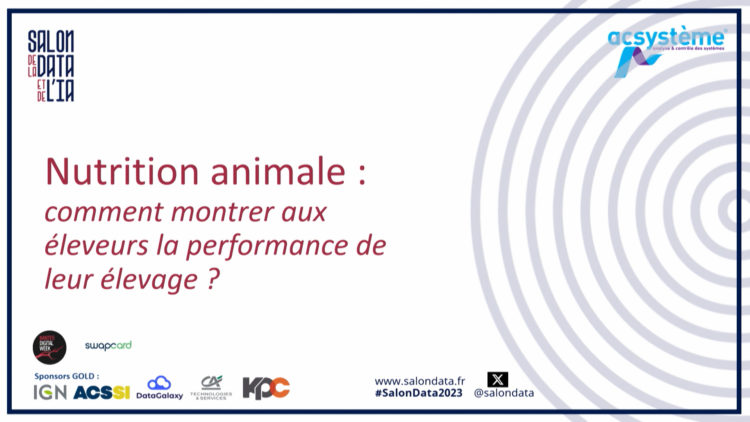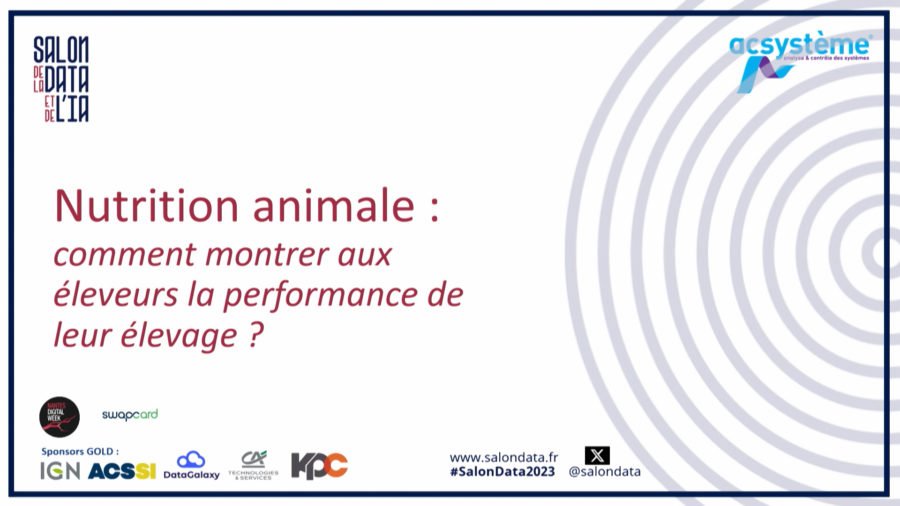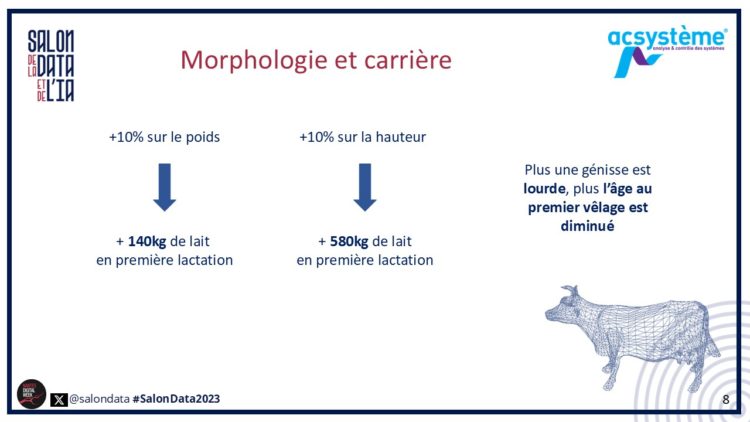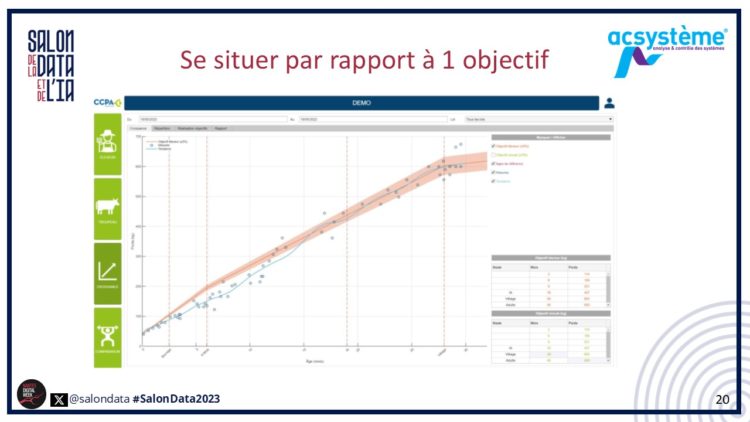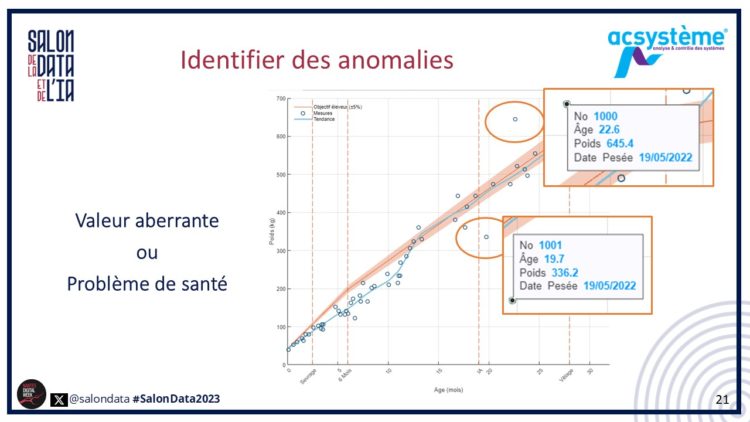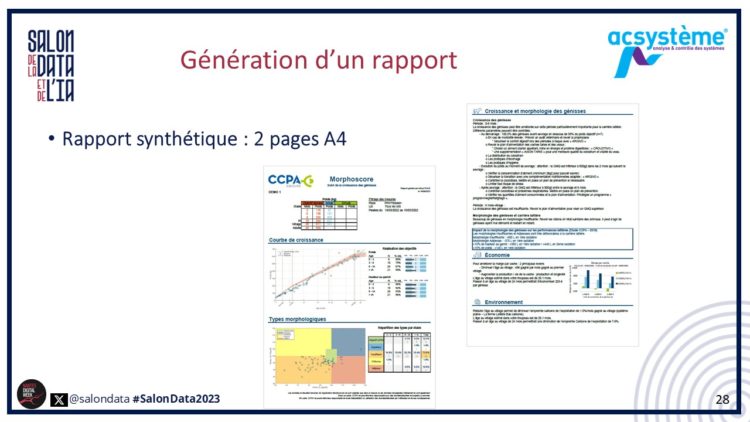Conference by Stéphanie Lescarret
Animal nutrition: how to show farmers how their farm is performing?
During the event “Salon de la Data et de l’IA”, Stéphanie Lescarret presented a case study in the use of algorithms, data processing and visualisation, for CCPA’s livestock technicians.
As part of its animal nutrition consultancy activities, CCPA has developed a tool for its livestock technicians to capture and analyse morphological data from ruminant herds.
The aim of this conference is to explore the following topics:
- the difficulties of collecting measurements on the farm (at the cow’s feet!),
- making most of the data through zootechnical expertise,
- interactive visualisations for farmers, to help them make informed decisions.

